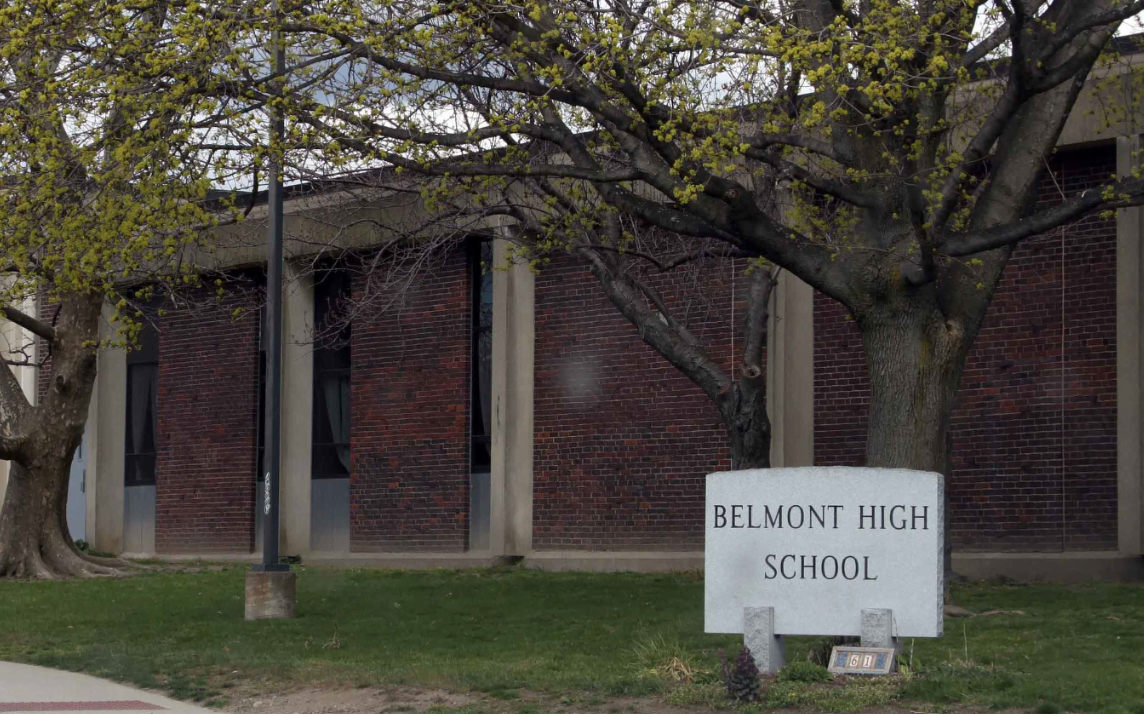Is a “new” Belmont High School just around the corner?
While a decision by the state authority which supplies critical funding which assists municipalities in the construction of school buildings is about a month away, a hint of heightened interest in Belmont’s plan to revamp the increasingly threadbare building on the banks of Clay Pit Pond is an indication, the state is taking a hard look at the Belmont School District’s 2014 Statement of Interest application for a new high school.
And if a letter from a Cape Cod educator is correct, Belmont’s odds of receiving a favorable nod from the state has increased considerably to begin the long process of constructing a 21st century school.
Two days before Halloween, on Oct. 29, a team of architects and engineers associated with the Massachusetts School Building Authority conducted a “senior study” of the 44-year-old brick and concrete structure, asking a lot of questions of school and town officials while poking around the building.
Belmont is one of about two dozen locations around the state where senior studies have been conducted since September, according to the Building Authority’s Facebook account.
“The Building Authority selects applications from within the Statement of Interest ‘bucket’ and choose some for a [senior] study,” Belmont’s superintendent of schools John Phelan told the Belmontonian after the meeting of the Belmont School Committee on Tuesday, Nov. 18.
“We want to review every SOI as part of the review process,” said Massachusetts School Building Authority spokesman Dan Collins.
While the Authority and District are remaining quiet on the reason Belmont was selected for the study, a letter from the head of another school district seeking the same MSBA funding was more forthcoming.
In a letter to a Brewster town official dated Oct. 27, 2014, Robert Sanborn, the superintendent/director of the Cape Cod Regional Technical High School, said the MSBA conducted a senior study at the Harwich-based school earlier in the month.
“At the meeting, we were informed [by the MSBA] that out of one hundred and eight SIOs submitted, Cape Cod Tech was one of twenty-five (25) schools designated for a senior study,”
“From the 25, a substantial percentage of districts will be recommended to move forward with an invitation into the MSBA eligibility period,” wrote Sanborn.
If the same number of districts, 13, are accepted for reimbursement funding by the MSBA as was in 2013, the odds of Belmont’s SOI being selected has increased considerably.
For more than a decade, the Belmont School District has faithfully submitted a SOI to the MSBA appealing for state funds to begin the renovation of Belmont High School and the construction of a new 35,000 sq.-ft. science wing.
The projected cost of a “new” Belmont High School building is estimated by the district at between $90 and $100 million. For a comparison, the cost for the renovation of and new structures at Winchester High School is $101 million in construction costs (the entire project is pegged at $130 million) with the state providing a grant of $44.5 million.
Each year since the early 2000s, Belmont has received only the yearly, “Thanks, try again next year” response from the authority.
But for the first time, the MSBA decided to conduct a more extensive review of not only the SOI but of the existing school building.
A “senior study“ is requested by the MSBA for “some of the district identified priority schools for which a Statement of Interest has been submitted,” according to the authority’s website.
The study allows the authority to perform several types of assessments depending on the school building deficiencies noted in the district’s SOI. The study also includes reviewing the SOI and all supporting documents as well as dig into historical enrollment trends and the educational programs provided at the school.
The visit (which is not a mandatory part of the senior study) includes a tour of the school by experienced architects and engineers who examine both the condition of the building as well as programmatic issues – such as evidence of overcrowding in classrooms and design features – that affect the delivery of the district’s educational program.
Before touring the school, the MSBA team interviews the superintendent, principal, facilities manager and other school personnel on areas such as confirming information about school building deficiencies as stated in the SOI and obtain a close-hand look at the current campus and see how that adversely impacts a student’s education.
“The MSBA’s goal is to collaborate with the district to find the right-sized, most fiscally responsible and educationally appropriate solution to the facility’s problems,” said the website.
“The information acquired during the study will help the MSBA determine the next steps in the process,” said Collins.
Despite dispensing hopeful answers, Collins made clear being selected for a study “certainly doesn’t signal that your SOI will be accepted this cycle.”
With a cap of $250 million per year over the next five years, only one-in-eight SOI’s targeting extensive renovations or a new school are accepted each year, said Collins.








Leave a Review or Comment